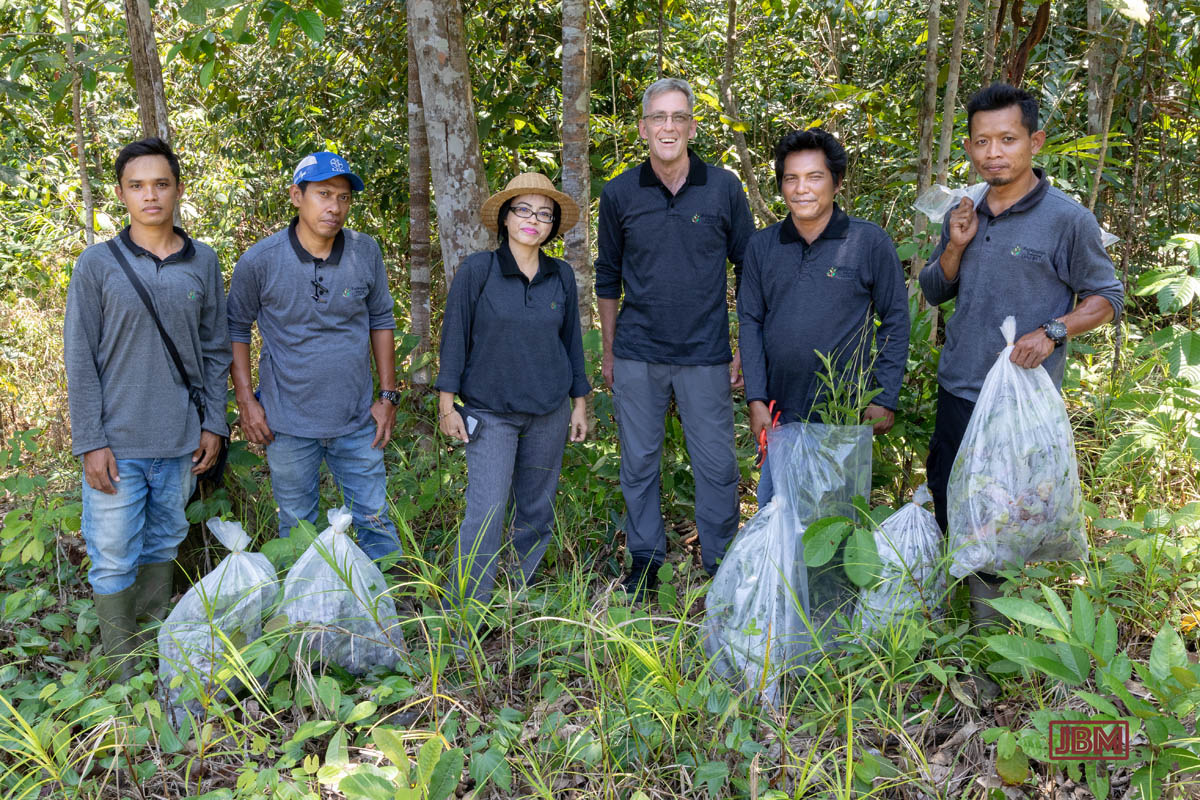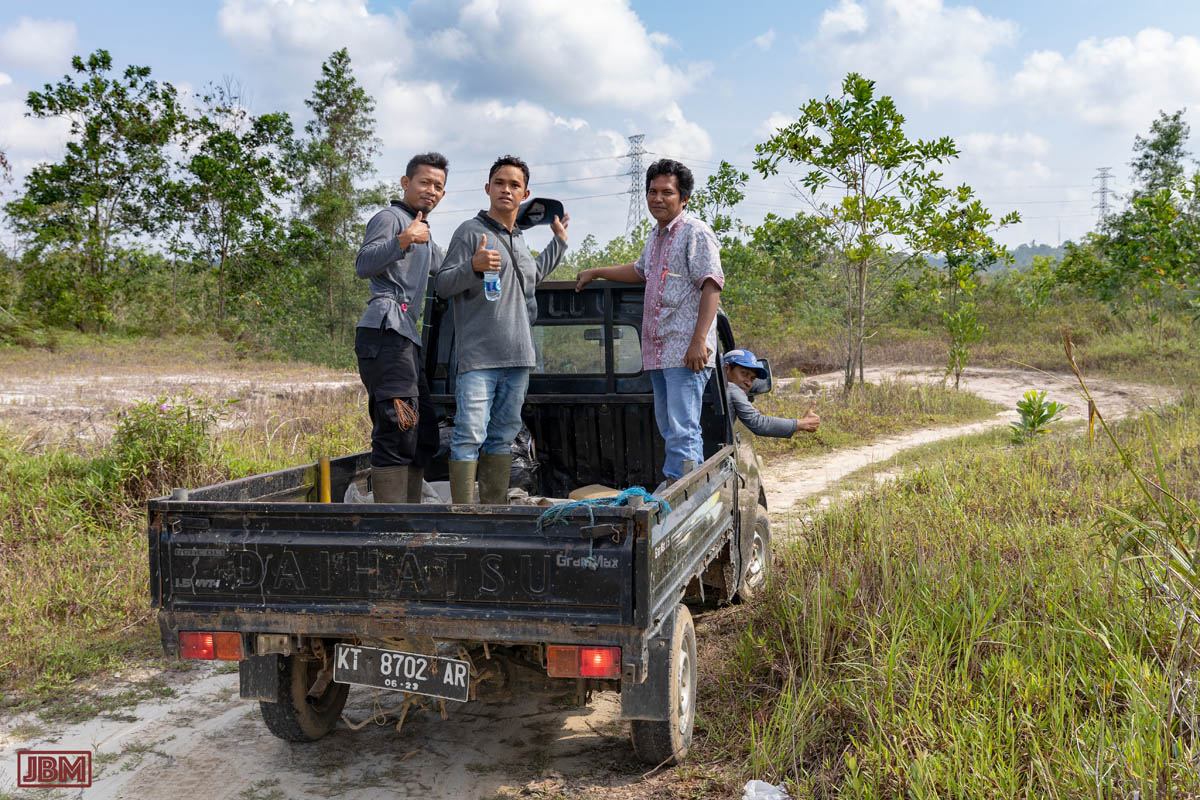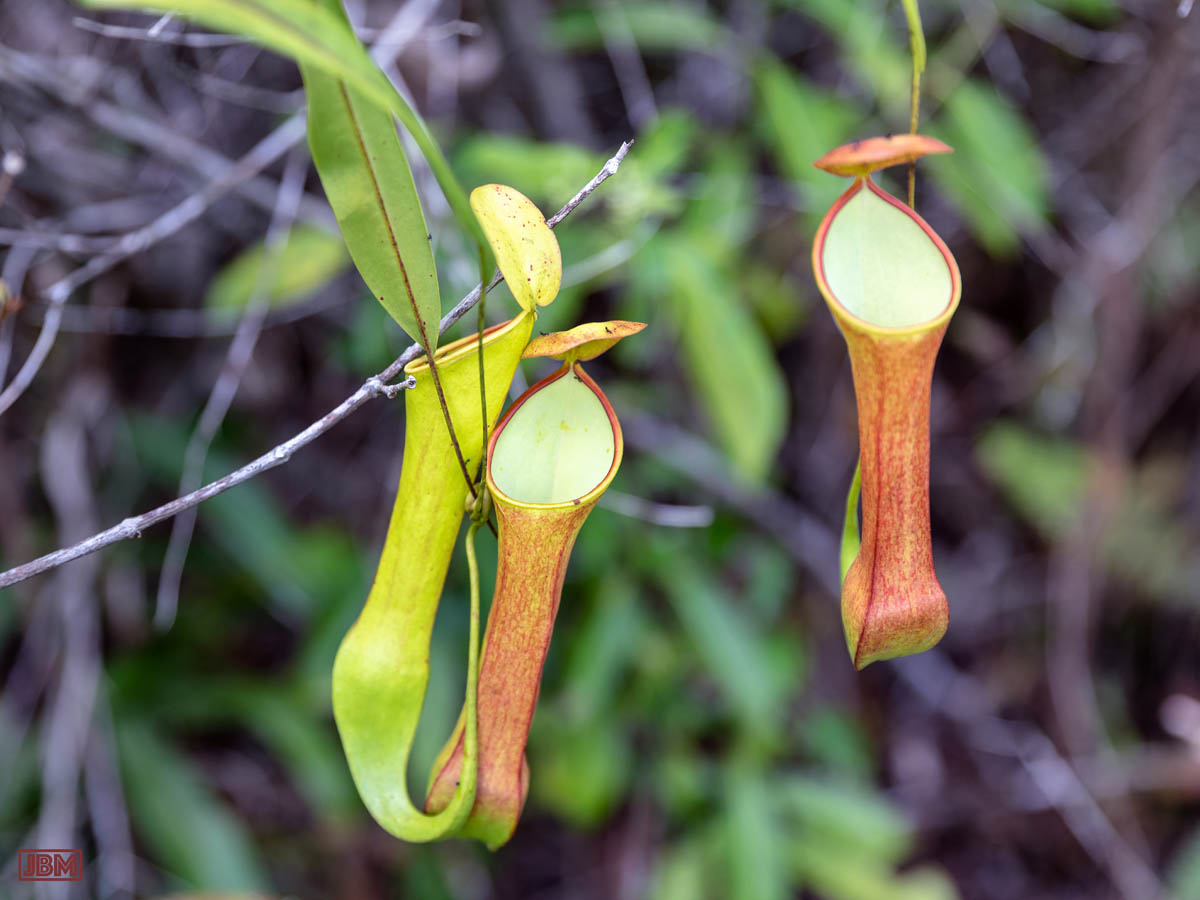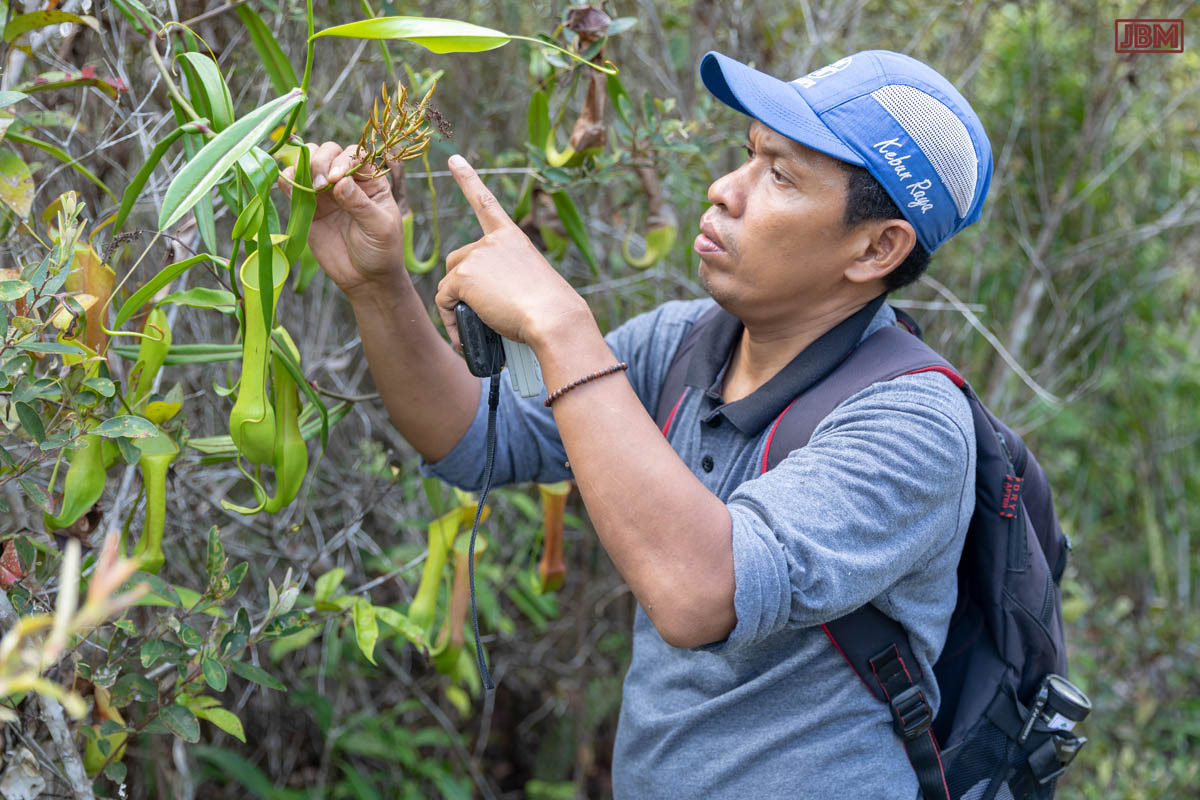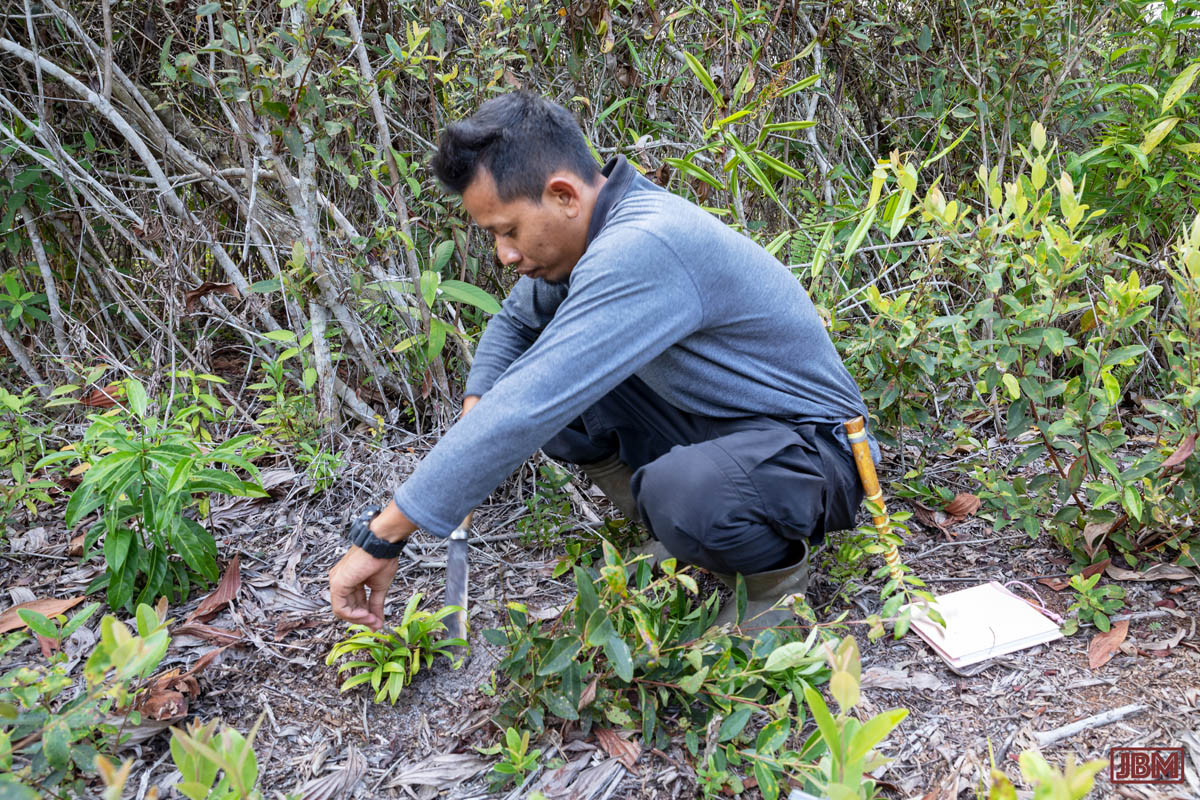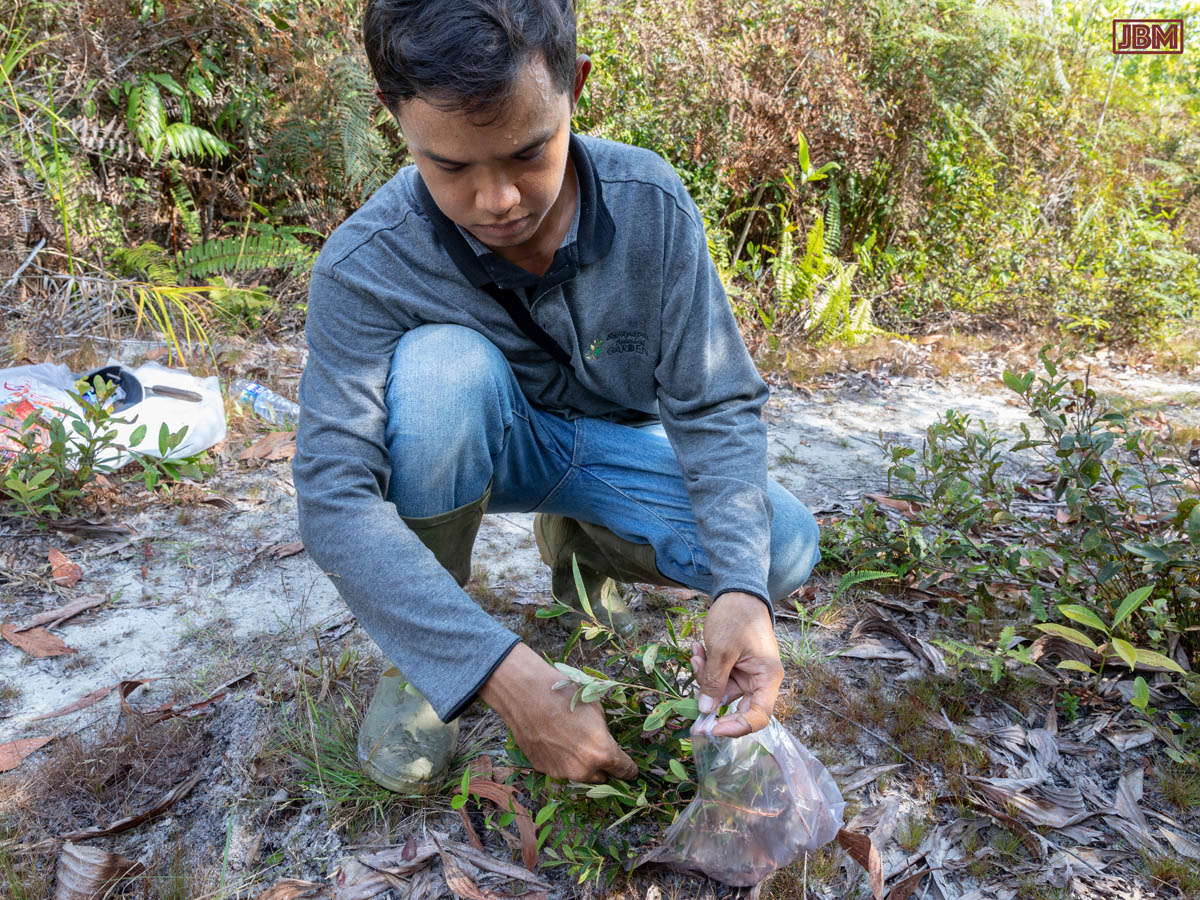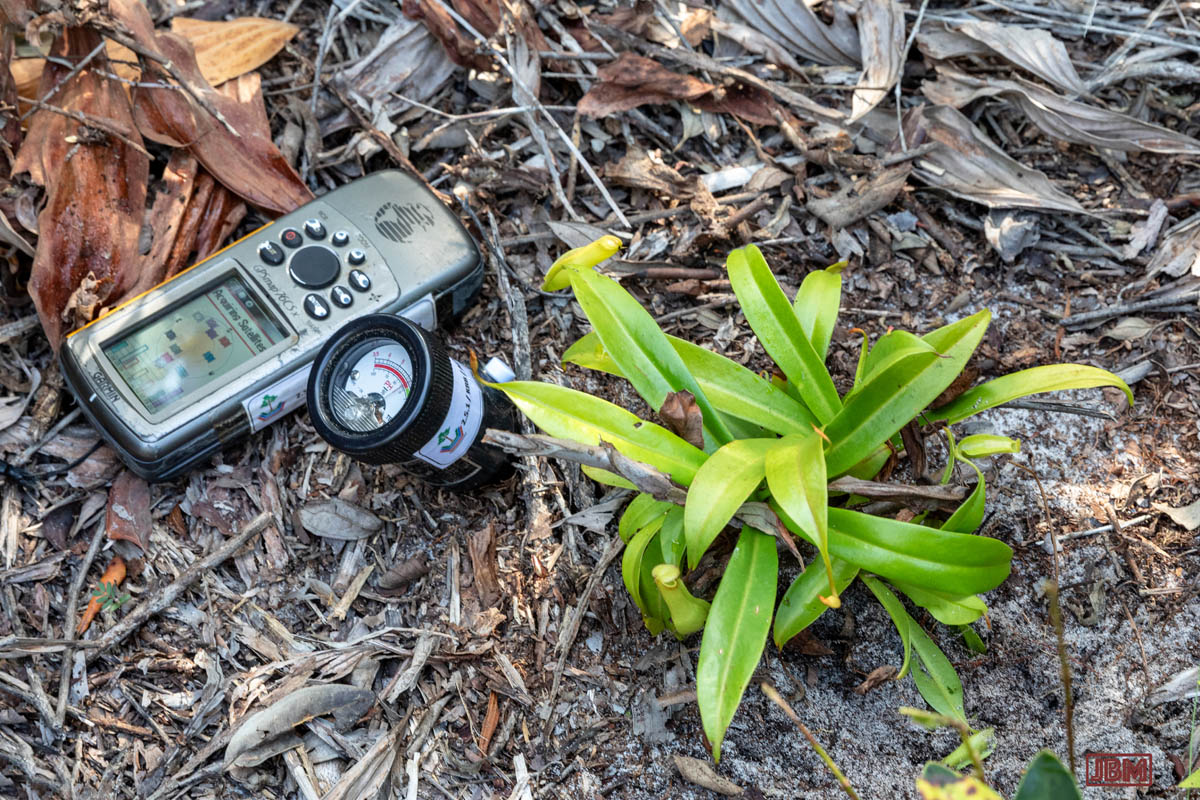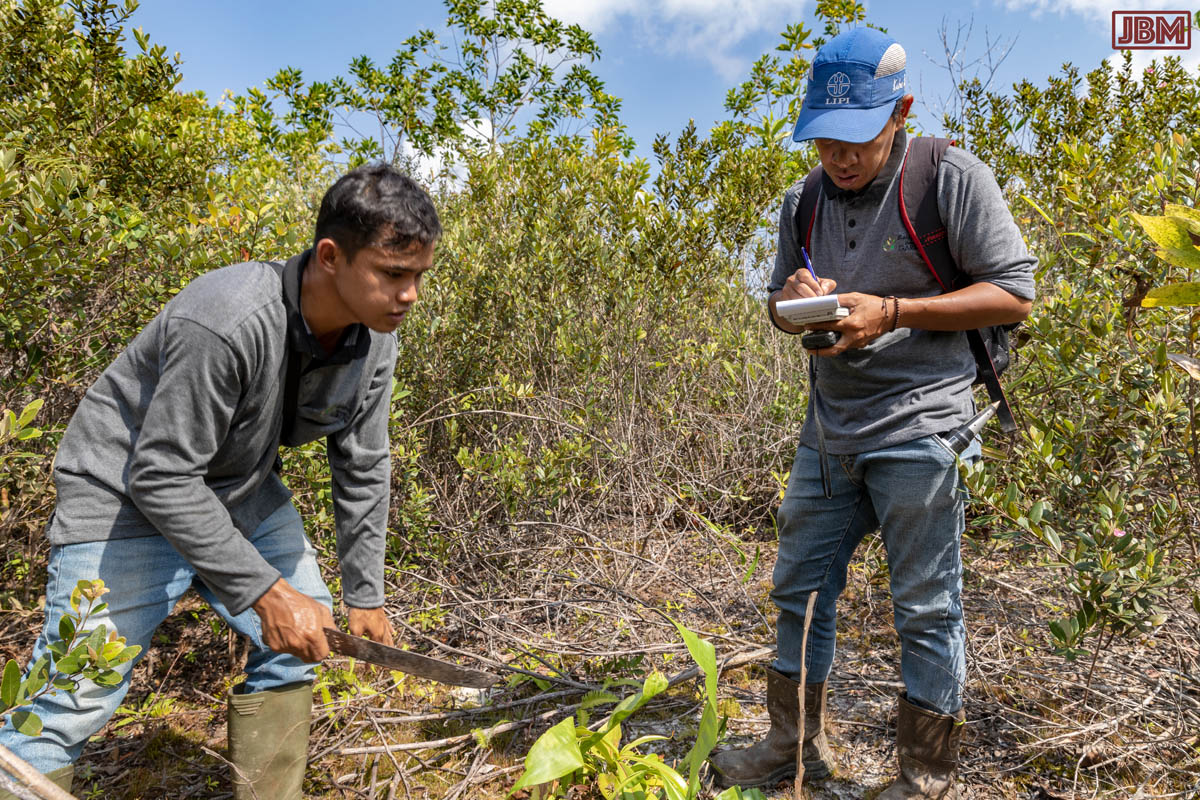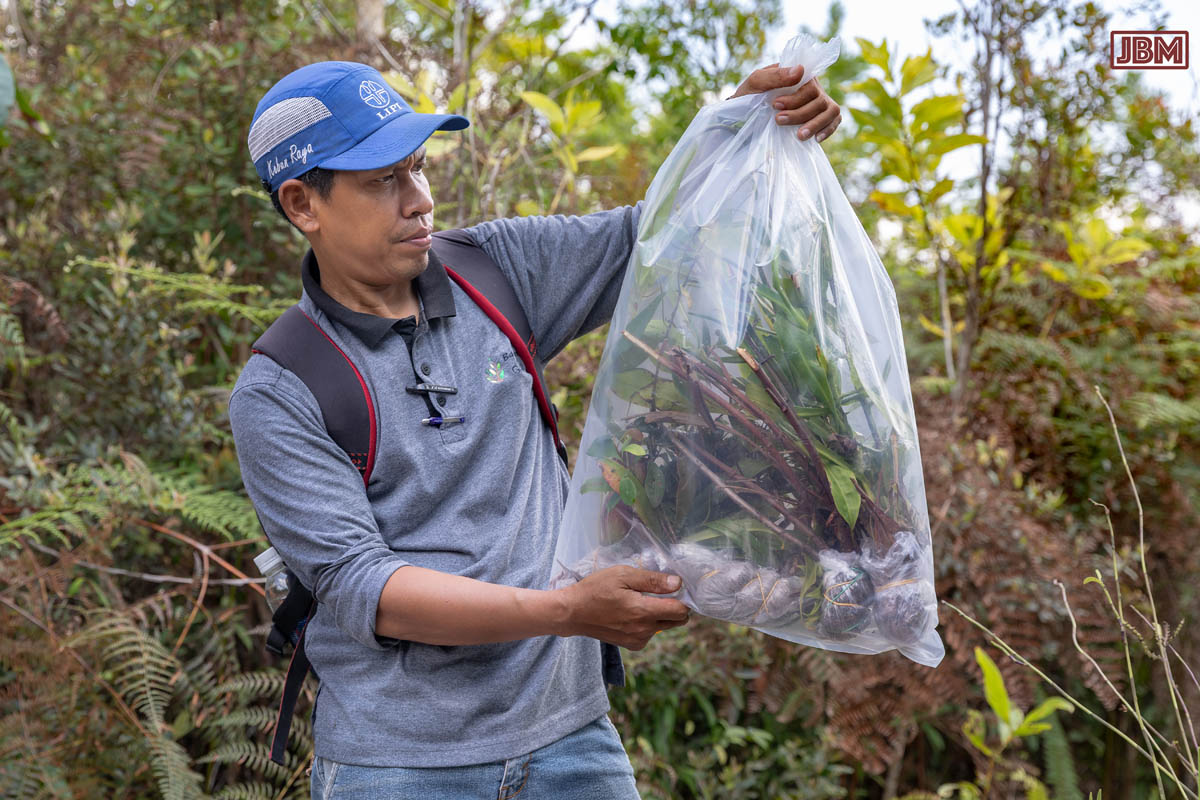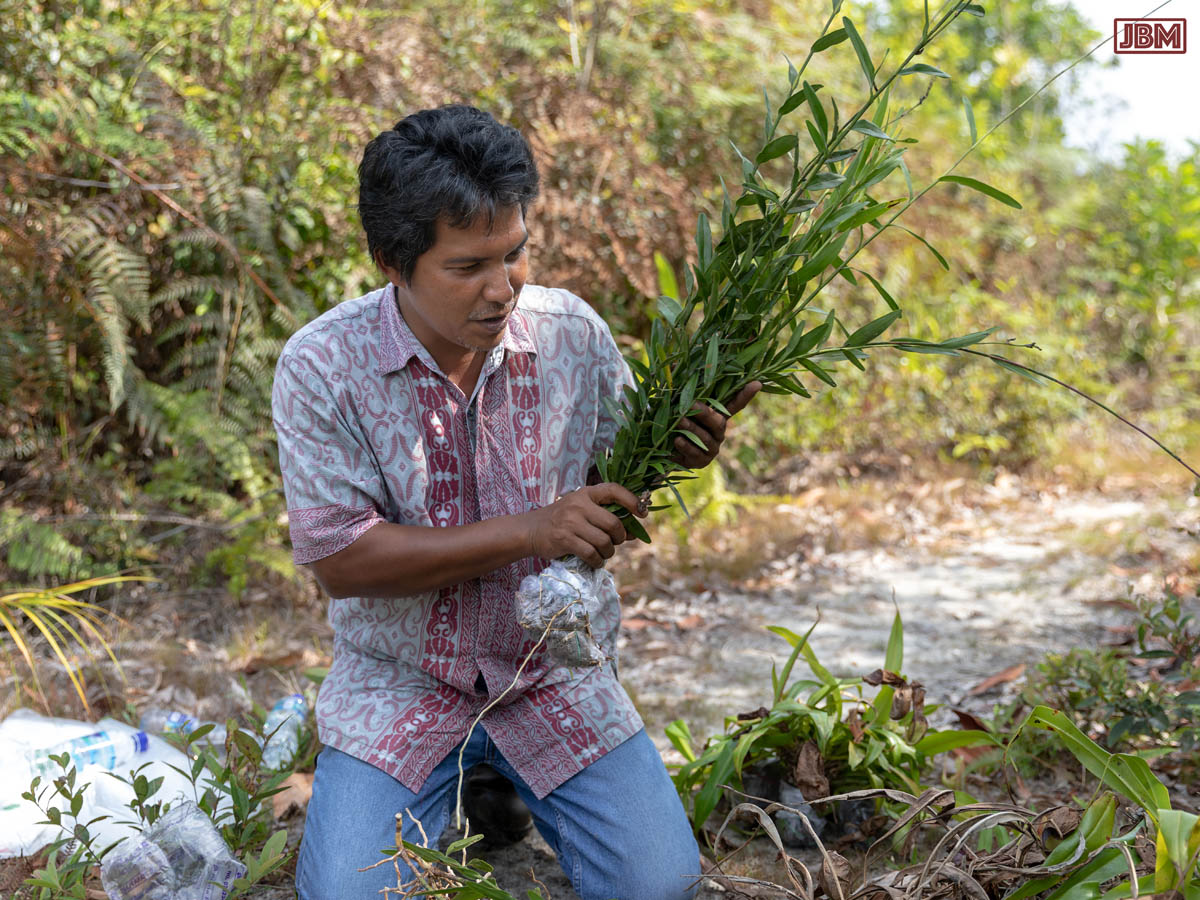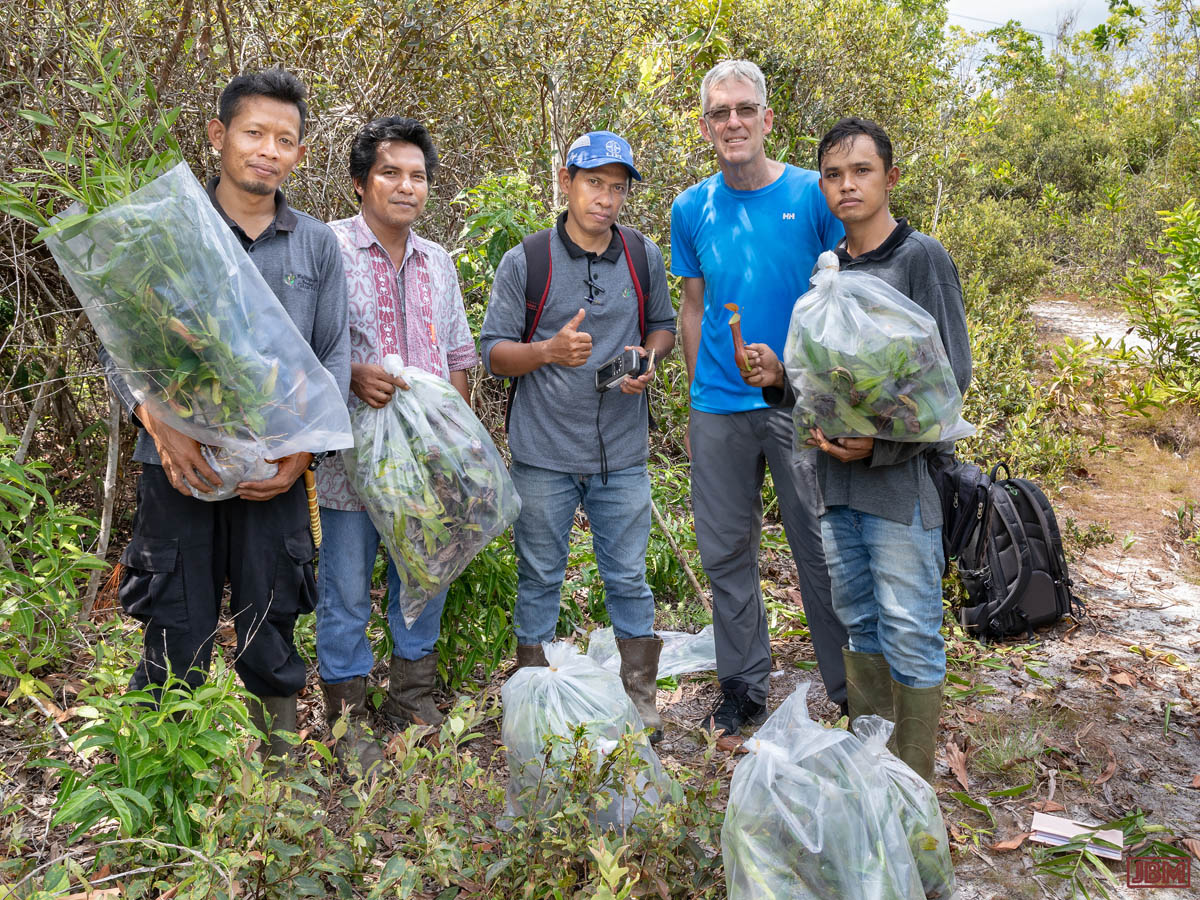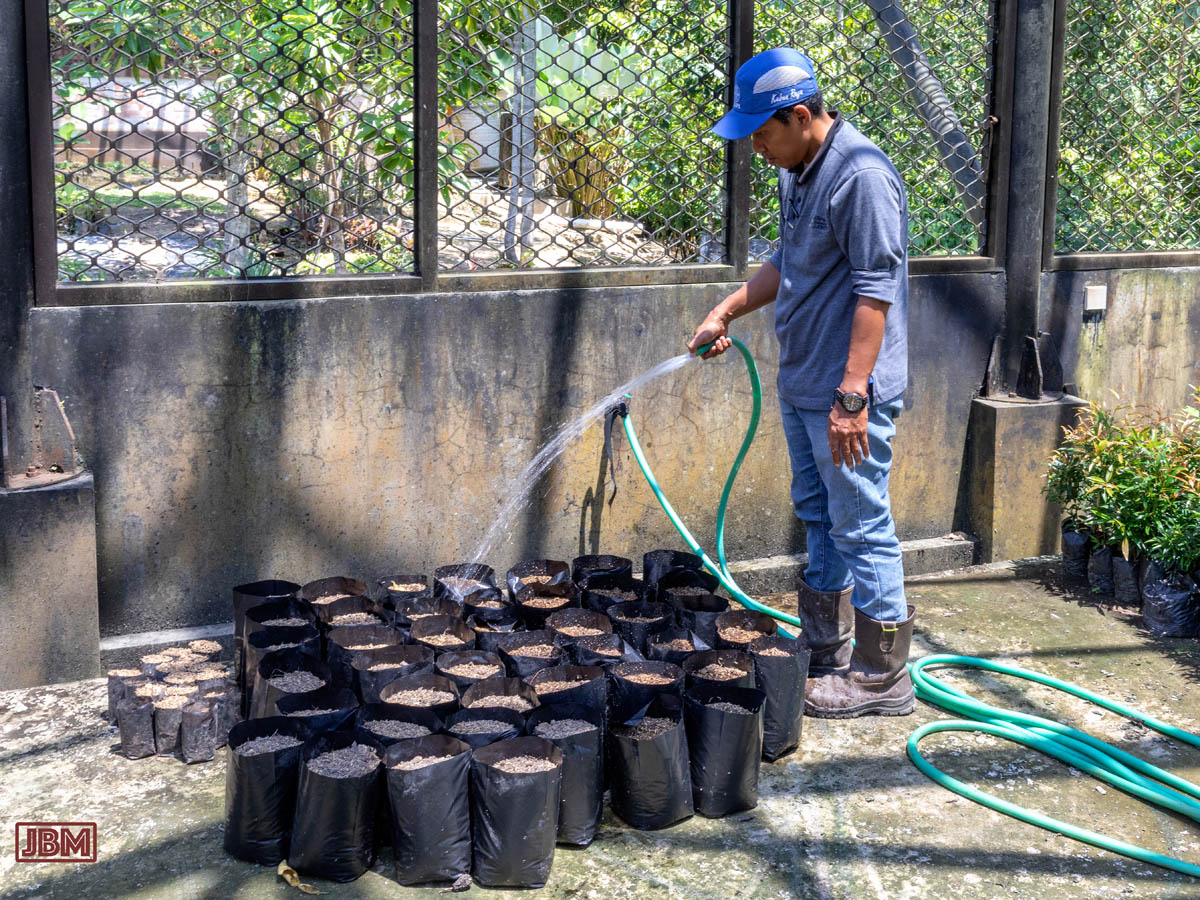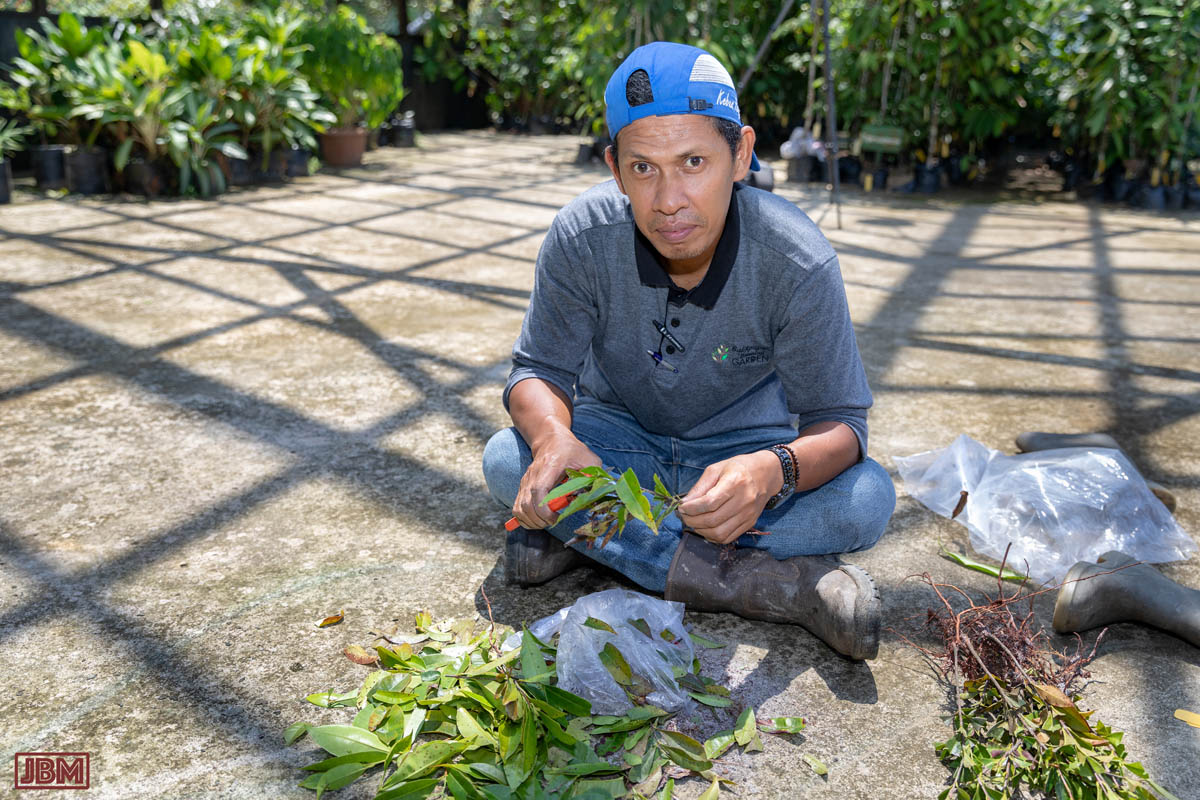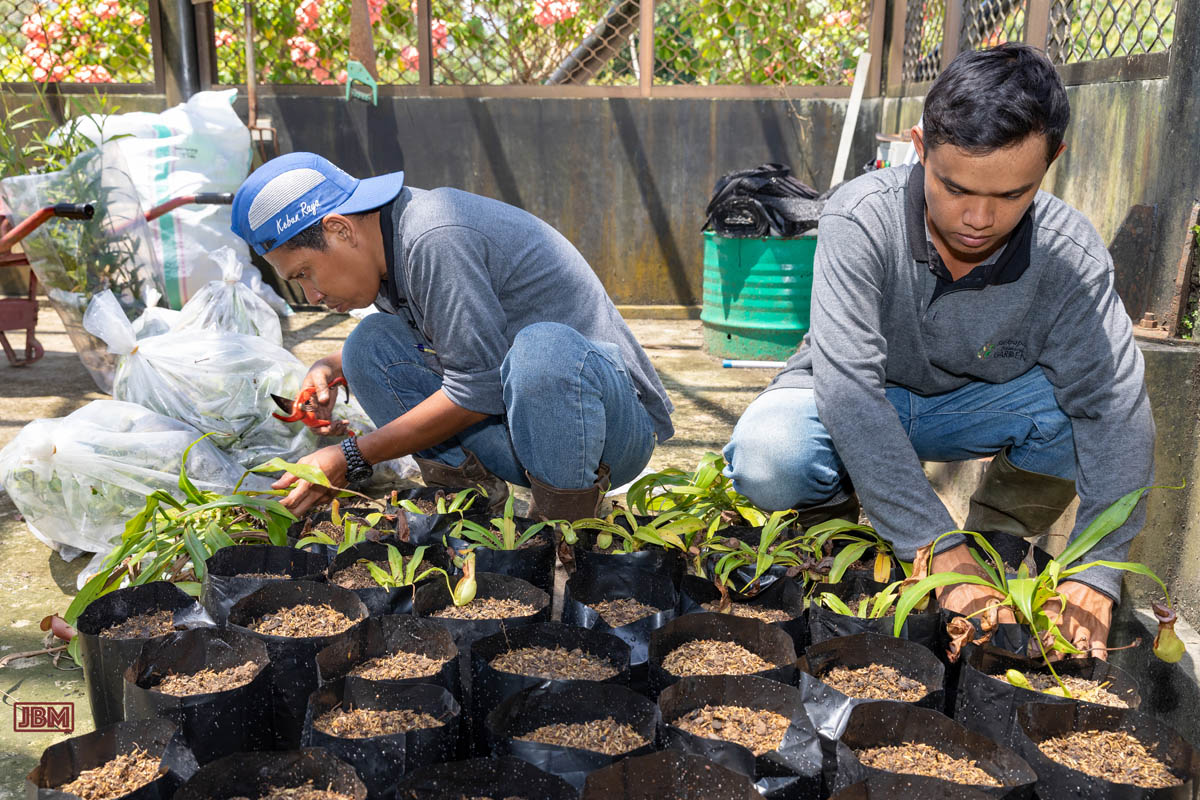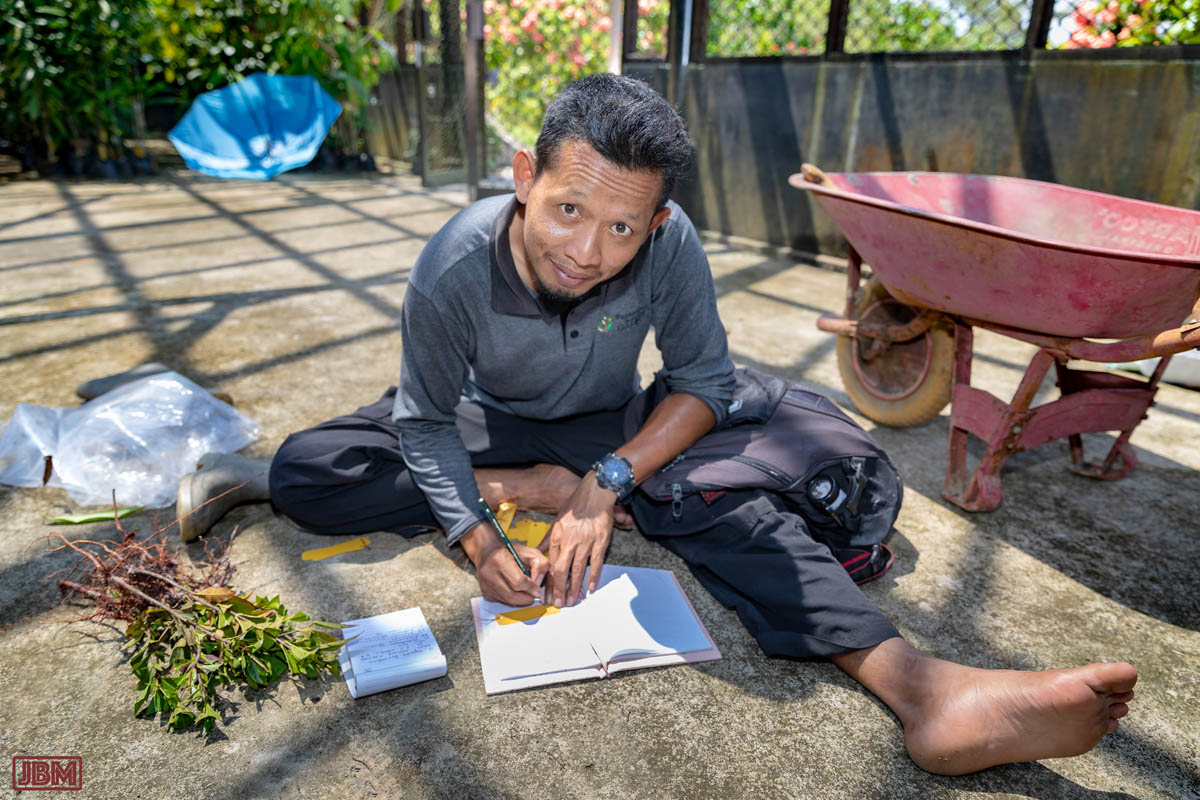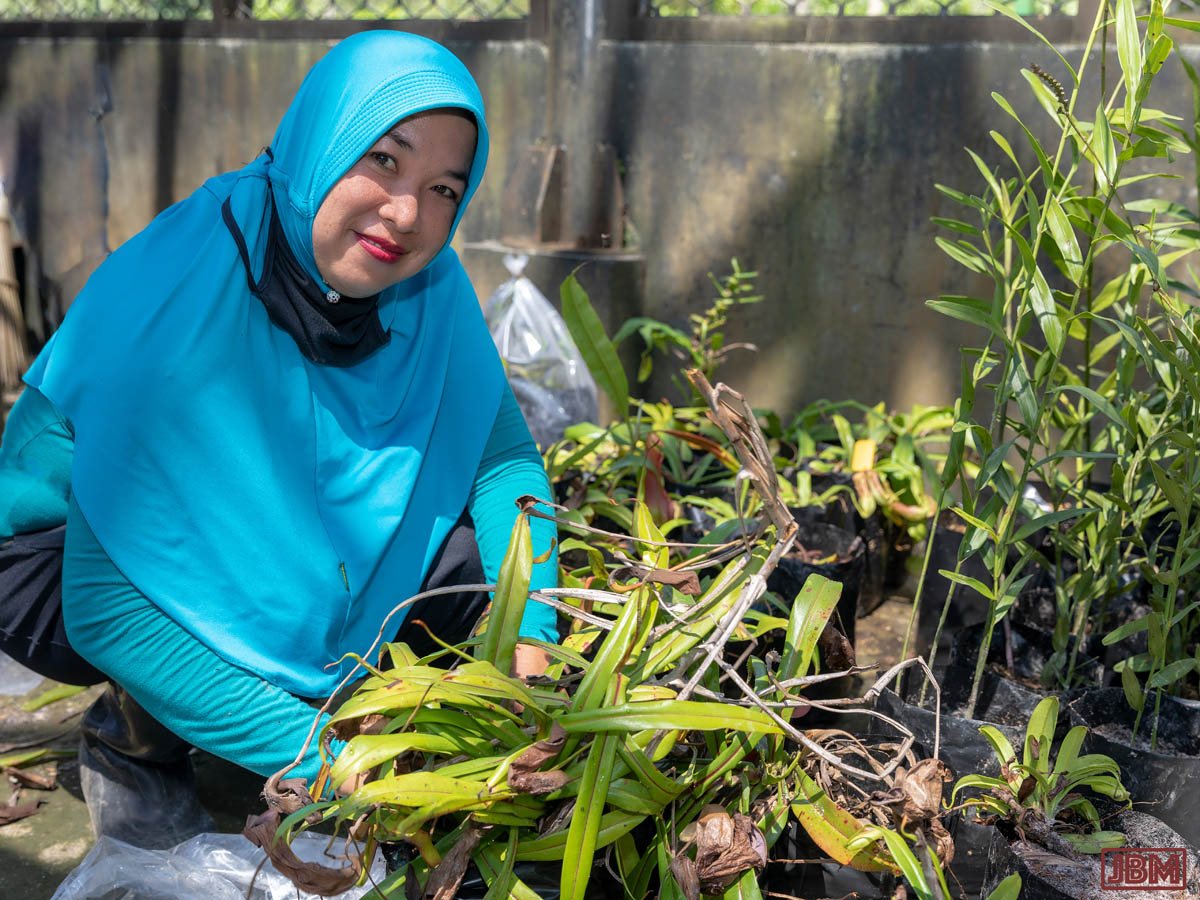On Wednesday I travelled with workmates from the Kebun Raya Balikpapan (Balikpapan Botanical Gardens) to collect plant specimens from the nearby region of Kariangau. Despite the even-more-than-usually hot weather, it was a really enjoyable and very interesting little expedition.
It’s only about ten kilometres away from the lowland Dipterocarpus rainforest that characterises the Kebun Raya, but it’s a very different environment, known in Borneo as ‘kerangas’. The word comes from the Dayak Iban language of West Kalimantan, and it literally means “land that can’t be used to grow rice”. It’s heathland, with nutrient-poor, sandy soils, no large trees, but many unique plant species.
We were specifically looking for two species of pitcher plants (Nepenthes, locally called ‘kantong semar’). These wonderful plants overcome the lack of soil nutrients (especially nitrogen) by being carnivorous, attracting and consuming ants and other unfortunate little creatures in their sticky ‘pitchers’.
The pitchers are actually formed as extensions to the plant’s leaves. The Nepenthes flowers are located in clusters on separate stems of the plant.
We collected two varieties: Nepenthes mirabilis and Nepenthes reinwardtiana. Each specimen was carefully extracted from the sandy soil.
Then the roots and ball of soil were wrapped in plastic to keep moisture in, and to prevent damage.
The soil acidity and moisture content were measured, and a GPS reading of the location and elevation was taken.
All these details, along with a unique code for the collector and a unique identifier for the specimen, were carefully documented. The unique identifier (known as a ‘nomor akses’) is used to keep track of the specimen when it is incorporated in the nursery at the Kebun Raya, and throughout its life after it is planted out into the ‘formal’ collections of the gardens.
The plants were then placed in larger plastic bags which were sealed, again to limit water loss before returning to the Kebun Raya.
As well as Nepenthes, we collected specimens of a ground orchid (Bromheadia finlaysoniana), and a species of the shrub Tristianopsis.
Job done, all packed up and ready to return.
Back at the Kebun Raya, black polybags had already been prepared in the nursery. Each contained equal proportions of soil, rice husks and aged manure. They were thoroughly moistened prior to planting the new specimens.
The specimens were removed from their collection bags, and excess foliage was trimmed to reduce transpiration while the plants get established in their new homes.
Each was then carefully planted into a black polybag.
Details from the field notebooks were transcribed onto forms, ready for input into the collection database.
Yellow ID tags were prepared and attached to the plant specimens, which are now ‘formally’ part of the collection of the Kebun Raya Balikpapan.

